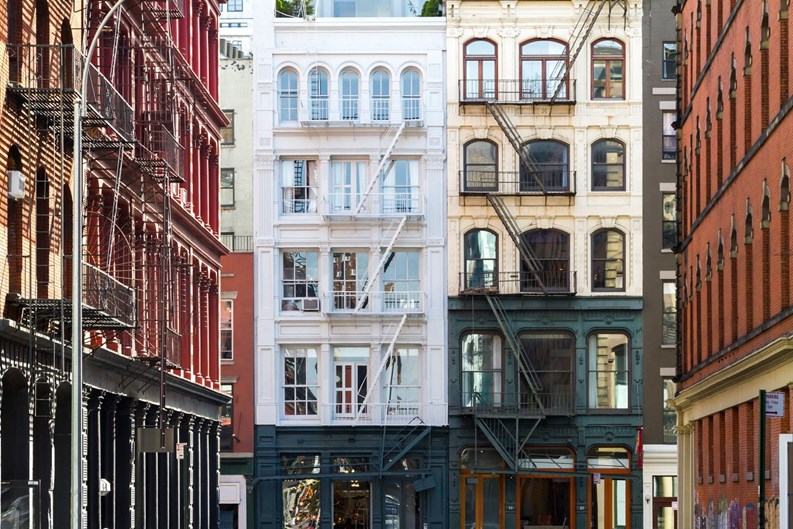To many people outside New York City, the very word ‘condo’ conjures up an image of an ultra-modern apartment located in a high-rise building with dramatic views. But that’s for the movies. First of all, condos, like any other type of apartment owned by a resident, can come in many shapes, sizes, and layouts ranging from high-rise luxury to garden efficiency and everything in between. Additionally, condos are often mentioned in the same breath as co-ops. But there are important distinctions between the two types of property.
The Differences
The basic difference in co-op and condo ownership is not in property type, but rather in the way in which your rights are held. A condominium isn’t an apartment per se, but an ownership of real property. The purchaser owns his or her individual unit, but has shared ownership of the common areas with other unit owners.
In a cooperative (co-op) apartment, the owner actually is the owner of shares in a corporation that owns the property and holds a proprietary lease for their specific unit. While the result -- a place to call home -- may be similar, the differences are quite dramatic, and affect the way you live from day to day.
What to Consider When Purchasing an Apartment
There are many potential differences between condominium and cooperative ownership that can determine what type of ownership is right for any particular purchaser. There are five factors to consider:
- Inventory
- Price
- Relative size
- Approvals
- Rules
Inventory
For various historical reasons, co-op ownership has been more common in New York City than condominium ownership. The New York Times reported in 2012 that the ratio of co-ops to condo units was about 75 percent to 25 percent. (In the late 1980s, that split was more like 85 percent co-op and 15 percent condo).
Today that split looks more like 70 percent co-op and 30 percent condo, as most new construction of for-sale apartments are condominiums. What that split also implies is that if you’re looking for a pre-war unit (a classic apartment built before World War II), you’re probably going to see co-ops. It also means that overall, purchasers have more choice in terms of neighborhood, building style, and unit layout if they will consider a co-op.
Price
Overall, condos are more expensive than co-ops -- and there are several reasons for this. First of all, the outright real property character of a condo is ‘cleaner’ and therefore commands a higher price. Second, and perhaps more to the nature of the differences, is the co-op’s underlying permanent mortgage and its reflection in the unit price. Because the co-op corporation owns the property, it has the ability to place a mortgage on the entire property, known as the underlying permanent mortgage. Each cooperator pays off his or her portion of that mortgage payment every month as part of their maintenance fees to the cooperative. The cooperator has a fractional interest in that mortgage. If one adds that fractional interest to the purchase price of a co-op unit, the overall price will look a lot more like the price of a similar unit held as a condominium. The lower purchase price offered by co-ops is often an incentive to buyers who have less funds available for down payments.
Size
Traditionally, co-op units were both sold and valued on a per room basis -- as three-room, four-room and five-room units, in other words. A 'four-room' unit is typically a two-bedroom unit. Due to the large number of older units in the co-op inventory, rooms tend to be a bit smaller than those in newly constructed condominium properties today. Hence, a two-bedroom condominium built recently is likely to contain more square footage than an older unit. Today, square footage is the more commonly used measure. Bigger pretty much always costs more. If you’re looking for larger rooms, a new condominium might be a better choice than an older co-op.
Approvals and Rules
Purchasing a condominium is a relatively simple affair. You obtain a contract and financing, and you close. Not so with cooperatives. They generally involve a longer and more complicated process involving the purchaser applying to the co-op board to approve the sale of the stock shares. These approvals can be rigorous, and may take a substantial amount of time. While a co-op may not discriminate based on such factors as race, religion, age or disability among others, they may have very strict financial requirements that the purchaser must demonstrate they meet. The co-op may also make and maintain a system of rules that apply to everything from subletting to maximum financing to pet ownership. If you’re seeking autonomy and a greater measure of anonymity, a co-op might not be your first choice.
The Professional’s Advice
Dorothy Somekh, a broker with New York City real estate firm Halstead, offers the following suggestions: “When a buyer is reluctant to provide all the financial information requested by typical co-op boards for whatever reason,” she says, “I advise them to look at a condominium. Condos are a better alternative for these buyers, and also for foreign buyers.” Alternatively, “When buyers know they will stay in the apartment for a long while and have no intention to sublet, I will show them co-ops. Also, people who have less assets are better served by co-ops, as prices are lower overall,” requiring smaller down payments.
Whatever your reasons and motivations, understand what you’re buying and where to find it. A good broker can help in your search.
AJ Sidransky is a staff writer at The Cooperator and a published novelist.







Comments
Leave a Comment